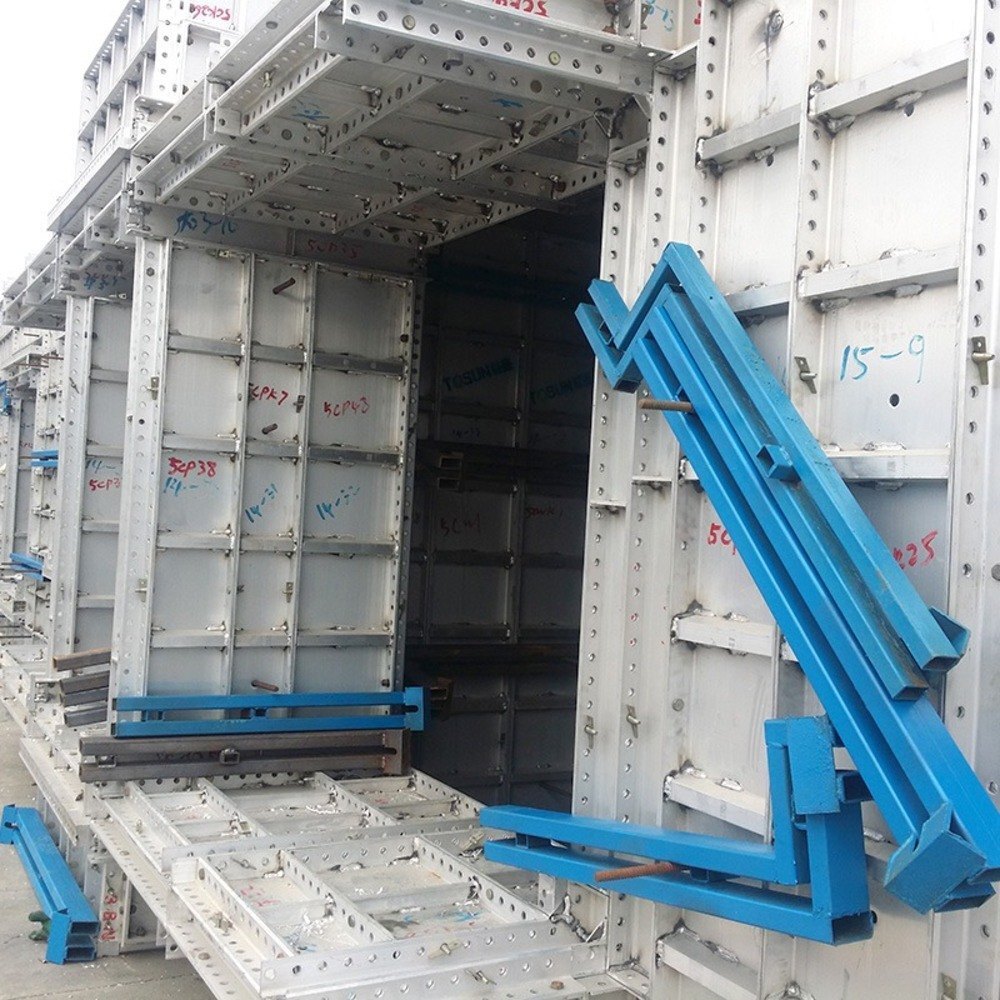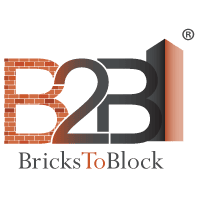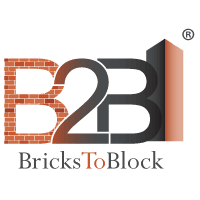Introduction:
Welcome to our blog series dedicated to uncovering the transformative power of Mivan Technology in the construction industry. In an era defined by innovation and efficiency, Mivan Technology stands out as a beacon of progress, reshaping the landscape of building practices worldwide.
At its core, Mivan Technology represents a departure from traditional construction methods, embracing a systematic approach that streamlines processes, enhances quality, and accelerates project timelines. Developed decades ago, this revolutionary technique has since evolved into a cornerstone of modern construction, offering a multitude of benefits that resonate across residential, commercial, and infrastructure projects alike.
Throughout this series, we'll embark on a comprehensive journey, delving deep into the intricacies of Mivan Technology. From its historical roots to its contemporary applications, we'll explore the principles, advantages, challenges, and future prospects of this dynamic methodology.
Whether you're a seasoned industry professional seeking to stay ahead of the curve or an enthusiast eager to understand the mechanics behind the structures that shape our world, join us as we unravel the mysteries of Mivan Technology and illuminate the path to a brighter, more efficient future in construction.

Understanding Mivan Technology:
Mivan Technology, often referred to as Aluminum Framework System, is a modern construction technique that has revolutionized the way buildings are erected. At its essence, Mivan Technology involves the use of aluminum formworks to create the structural elements of a building, including walls, floors, columns, and beams. Unlike traditional construction methods that rely on timber or steel formworks, Mivan Technology utilizes lightweight and durable aluminum components that are specifically designed for rapid assembly and disassembly.
Overview of Mivan Technology:
The core principle of Mivan Technology lies in its systematic approach to construction. The process begins with the fabrication of aluminum formworks tailored to the precise dimensions and specifications of the building project. These frameworks consist of panels, props, and other modular components that interlock to create a sturdy framework for casting concrete.
Once the formworks are assembled onsite, concrete is poured into the molds, allowing it to cure and take the shape of the desired structural elements. Unlike traditional methods that require extensive time for formwork removal and curing, Mivan Technology facilitates rapid construction cycles, enabling faster project completion without compromising on quality.
Evolution and Development:
Mivan Technology traces its roots back to the 1960s when it was first introduced in Europe as an alternative to conventional construction methods. Over the decades, continuous innovation and refinement have propelled Mivan Technology into the forefront of modern construction practices, with advancements in formwork design, material technology, and construction techniques further enhancing its efficiency and versatility.
Core Principles and Methodology:
Central to the success of Mivan Technology are its core principles of speed, efficiency, and precision. By utilizing standardized formworks and employing a systematic assembly process, Mivan Technology minimizes construction time and labor requirements while maximizing productivity and consistency. Moreover, the use of aluminum formworks offers inherent benefits such as durability, reusability, and dimensional accuracy, ensuring high-quality results with minimal waste and rework.
In essence, Mivan Technology represents a paradigm shift in construction methodology, offering a holistic approach that addresses the challenges of traditional construction while unlocking new possibilities for innovation and progress in the built environment.
Advantages of Mivan Technology:
Mivan Technology stands out in the construction industry for its numerous advantages, offering a plethora of benefits that redefine the way buildings are constructed. From enhanced speed and efficiency to superior quality and sustainability, Mivan Technology presents a compelling case for its widespread adoption across various construction projects.
1. Speed and Efficiency:
· Mivan Technology facilitates rapid construction cycles by streamlining the assembly process and minimizing downtime between construction stages.
· The systematic approach to formwork installation and concrete casting accelerates project timelines, allowing for faster completion and reduced overall construction duration.
· With shorter construction periods, Mivan Technology enables developers to meet tight deadlines and capitalize on market opportunities more effectively.
2. Cost-effectiveness:
· The use of aluminum formworks in Mivan Technology reduces material costs compared to traditional timber or steel formworks, resulting in significant savings for construction projects.
· Faster construction timelines translate into reduced labour costs and overhead expenses, optimizing project budgets and improving overall profitability.
· The durability and reusability of aluminum formworks minimize replacement and maintenance costs over the long term, providing additional cost savings throughout the lifecycle of the formwork system.
3. Quality and Durability:
· Mivan Technology ensures high-quality construction through precise formwork fabrication and standardized assembly processes, resulting in uniformity and consistency in the finished structure.
· The inherent strength and rigidity of aluminum formworks contribute to the structural integrity of the building, enhancing resistance to environmental factors such as wind, seismic activity, and corrosion.
· By reducing the risk of defects and deviations during construction, Mivan Technology enhances the longevity and durability of the built environment, resulting in structures that stand the test of time.
4. Environmental Sustainability:
· Mivan Technology promotes sustainable construction practices by minimizing material wastage, optimizing resource utilization, and reducing carbon footprint compared to traditional construction methods.
· The lightweight nature of aluminum formworks reduces transportation emissions and energy consumption associated with material handling and logistics.
· By facilitating energy-efficient building designs and promoting the use of eco-friendly construction materials, Mivan Technology contributes to a greener and more sustainable built environment.
In summary, the advantages of Mivan Technology extend far beyond just construction efficiency, encompassing cost-effectiveness, quality assurance, and environmental stewardship. As the construction industry continues to evolve, Mivan Technology remains at the forefront, driving innovation and delivering superior outcomes for projects of all scales and complexities.
Applications of Mivan Technology:
Mivan Technology is a versatile solution that finds extensive use across diverse construction sectors:
1. Residential: It's the go-to choice for residential projects, ranging from single-family homes to large-scale housing developments. Mivan ensures swift construction, maintaining consistency and quality across all units, thus addressing the ever-growing demand for housing efficiently.
2. Commercial: In the commercial sphere, Mivan Technology expedites the construction of office buildings, shopping malls, and retail spaces. Its efficient processes enable developers to bring commercial projects to market faster, seizing business opportunities and meeting consumer demands promptly.
3. Infrastructure: Mivan plays a crucial role in infrastructure development, facilitating the construction of critical structures such as bridges, tunnels, and transportation facilities. Its ability to streamline construction timelines while adhering to stringent safety standards minimizes disruptions and ensures timely completion of vital infrastructure projects.
4. High-rise: For high-rise construction, Mivan Technology offers unparalleled efficiency and structural integrity. By optimizing vertical construction processes, it reduces project timelines and enhances the overall sustainability of tall buildings, meeting the demands of urbanization with speed and precision.
5. Specialized: Mivan Technology caters to the unique requirements of specialized structures like hospitals, schools, and industrial facilities. Its customizable approach ensures tailored solutions that meet specific design and functionality needs, providing efficient construction processes for specialized projects.
In summary, Mivan Technology's versatility and efficiency make it a preferred choice across various construction sectors, offering solutions that meet the demands of modern development while maintaining high standards of quality and sustainability.
Challenges and Limitations of Mivan Technology:
While Mivan Technology offers numerous advantages, it is not without its challenges and limitations. Understanding these factors is essential for ensuring successful implementation and mitigating potential drawbacks:
1. Initial Investment and Setup Costs:
· The initial investment required for Mivan Technology, including the fabrication of aluminum formworks and training of personnel, can be substantial, posing a barrier to entry for some construction firms.
· Setting up the infrastructure for Mivan Technology projects, such as specialized equipment and support systems, may entail additional costs that need to be carefully considered in project budgeting.
2. Skilled Labor Requirements:
· Implementing Mivan Technology effectively relies on skilled labor capable of handling aluminum formworks and executing construction tasks with precision.
· Training and retaining skilled workers proficient in Mivan Technology techniques may present challenges, particularly in regions where such expertise is scarce or in high demand.
3. Adaptability to Various Designs and Structures:
· While Mivan Technology is suitable for a wide range of construction projects, its adaptability to complex architectural designs and unconventional structural requirements may be limited.
· Certain design elements or structural configurations may necessitate modifications to standard Mivan formworks, potentially impacting construction efficiency and project timelines.
4. Logistical Constraints:
· Transportation and logistics can pose challenges for Mivan Technology projects, especially in remote or inaccessible construction sites where mobilizing equipment and materials may be difficult.
· Coordinating the delivery and assembly of aluminum formworks and concrete supplies requires careful planning to avoid delays and disruptions to construction schedules.
5. Quality Control and Assurance:
· Maintaining consistent quality standards throughout the construction process is essential for ensuring the structural integrity and durability of Mivan-built structures.
· Quality control measures, such as regular inspections and adherence to construction guidelines, are critical to identifying and addressing potential defects or deficiencies in the finished project.

1. Advanced Materials and Technologies:
· Continued research and development in materials science will lead to the introduction of advanced alloys and composites for Mivan formworks, enhancing durability, flexibility, and sustainability.
· Integration of digital technologies such as Building Information Modeling (BIM) and Augmented Reality (AR) will streamline project planning, design validation, and on-site construction management, optimizing efficiency and accuracy.
2. Prefabrication and Modular Construction:
· The adoption of prefabricated and modular construction techniques will complement Mivan Technology, enabling off-site fabrication of building components for faster assembly on-site.
· Modularization of Mivan formworks and building elements will facilitate standardized construction processes and enhance scalability for projects of varying scales and complexities.
3. Robotics and Automation:
· Automation of construction tasks through robotics and mechanization will revolutionize Mivan Technology, increasing productivity, reducing labor requirements, and improving safety on construction sites.
· Robotic systems for formwork assembly, concrete pouring, and finishing will streamline construction workflows and enable precision engineering for complex architectural designs.
4. Green Building Practices:
· Embracing sustainable construction practices will be a key focus in the future of Mivan Technology, with an emphasis on energy efficiency, waste reduction, and environmentally friendly materials.
· Integration of renewable energy systems, green roofs, and rainwater harvesting solutions into Mivan-built structures will enhance sustainability and resilience to climate change.
5. Prefinished and Smart Buildings:
· Prefinished building components and smart technologies will be seamlessly integrated into Mivan construction processes, enabling the delivery of high-performance buildings with advanced amenities and connectivity features.
· Smart building systems for energy management, security, and occupant comfort will enhance the livability and functionality of Mivan-built environments, meeting the evolving needs of occupants and stakeholders.
6. Global Adoption and Standardization:
· Mivan Technology will witness increased global adoption and standardization, driven by its proven track record, cost-effectiveness, and adaptability to diverse construction requirements.
· Collaboration among industry stakeholders, governments, and international organizations will promote knowledge sharing, best practices dissemination, and the harmonization of Mivan standards and regulations worldwide.
In summary, the future of Mivan Technology is marked by innovation, sustainability, and global collaboration, as it continues to redefine the construction industry and shape the built environment for generations to come.
Comparison with Traditional Construction Methods:
Mivan Technology represents a significant departure from traditional construction methods, offering several advantages and innovations that differentiate it from conventional approaches. Here's a comparative analysis highlighting the key differences between Mivan Technology and traditional construction methods:
1. Speed and Efficiency:
· Mivan Technology enables faster construction cycles compared to traditional methods, thanks to its systematic assembly processes and rapid formwork installation.
· Traditional construction methods typically involve sequential activities and longer lead times for formwork fabrication, resulting in slower project timelines and increased construction durations.
2. Cost-effectiveness:
· Mivan Technology offers cost savings through reduced labor requirements, shorter construction durations, and optimized material utilization.
· Traditional construction methods may incur higher labor and material costs due to manual processes, longer project durations, and potential material wastage.
3. Quality and Consistency:
· Mivan Technology ensures uniformity and consistency in construction quality through standardized formwork systems and precise assembly techniques.
· Traditional construction methods may result in variations in quality due to manual labor, inconsistencies in formwork installation, and reliance on artisanal skills.
4. Structural Integrity:
· Mivan Technology provides enhanced structural integrity and durability, thanks to the use of durable aluminum formworks and systematic construction processes.
· Traditional construction methods may be susceptible to errors in formwork installation, leading to potential structural deficiencies and long-term maintenance issues.
5. Flexibility and Adaptability:
· Mivan Technology offers flexibility in design and construction, accommodating diverse architectural styles and structural requirements.
· Traditional construction methods may be less flexible and adaptable, particularly in complex architectural designs or projects with unique structural challenges.
6. Environmental Impact:
· Mivan Technology promotes sustainability through reduced material wastage, optimized resource utilization, and energy-efficient construction practices.
· Traditional construction methods may have a higher environmental footprint due to material wastage, longer construction durations, and reliance on non-renewable resources.
7. Labor Skills and Training:
· Mivan Technology requires specialized training for personnel involved in formwork assembly and concrete casting, ensuring efficient and safe construction practices.
· Traditional construction methods may rely on general labor with varying skill levels, leading to inconsistencies in construction quality and safety standards.
Gaining insights from industry experts and professionals in the field provides valuable perspectives on the adoption and implementation of Mivan Technology in construction projects. Here's how expert insights and interviews can enrich our understanding of Mivan Technology:
1. Architectural Perspectives:
· Interviews with architects specializing in innovative construction materials and techniques can shed light on the design possibilities and architectural considerations unique to Mivan Technology.
· Experts can discuss how Mivan Technology influences building aesthetics, spatial design, and the integration of sustainable features into architectural designs.
2. Engineering Expertise:
· Conversations with structural engineers experienced in Mivan Technology can offer insights into the structural integrity, load-bearing capacity, and seismic resistance of Mivan-built structures.
· Engineers can share their expertise on optimizing structural designs, conducting feasibility studies, and ensuring compliance with building codes and regulations.
3. Contracting and Construction Management:
· Interviews with construction managers and contractors familiar with Mivan Technology can provide practical insights into project planning, scheduling, and execution.
· Professionals can discuss best practices for formwork assembly, concrete pouring, and quality control measures to ensure successful implementation of Mivan Technology on construction sites.
4. Sustainability and Environmental Experts:
· Discussions with sustainability experts can explore the environmental benefits of Mivan Technology, including resource efficiency, waste reduction, and energy savings.
· Experts can highlight the role of Mivan Technology in promoting green building practices and achieving sustainability goals in construction projects.
5. Academic and Research Perspectives:
· Insights from academic researchers and scholars studying Mivan Technology can offer a deeper understanding of its technical aspects, performance metrics, and future developments.
· Researchers can share findings from empirical studies, simulation models, and experimental research to inform industry practices and policy decisions related to Mivan Technology.
6. Case Studies and Project Success Stories:
· Interviews with project stakeholders, including developers, investors, and end-users, can provide firsthand accounts of the benefits and challenges encountered in Mivan Technology projects.
· Success stories from completed projects can serve as valuable learning experiences, highlighting key strategies for project management, collaboration, and overcoming obstacles.
By engaging with experts and practitioners across various disciplines, we can gain valuable insights and perspectives that enrich our knowledge and understanding of Mivan Technology, paving the way for its continued innovation and adoption in the construction industry.
Common Misconceptions:
1. Mivan Technology is only suitable for small-scale projects.
· In reality, Mivan Technology is scalable and can be adapted for projects of various sizes and complexities, including large-scale developments and high-rise buildings.
2. Mivan Technology is prohibitively expensive.
· While there may be initial investment costs associated with Mivan Technology, the long-term cost savings from reduced construction durations and improved efficiency often outweigh the upfront expenses.
3. Mivan-built structures are less durable than traditionally constructed buildings.
· Mivan-built structures are known for their durability and structural integrity, thanks to the precision engineering of aluminum formworks and systematic construction processes.
4. Mivan Technology is difficult to learn and implement.
· While training and skill development are essential for effective implementation of Mivan Technology, comprehensive training programs and support from experienced professionals can facilitate smooth adoption and integration into construction practices.
5. Mivan Technology is not environmentally friendly.
· On the contrary, Mivan Technology promotes sustainability through reduced material wastage, optimized resource utilization, and energy-efficient construction practices, making it a greener alternative to traditional construction methods.
Mivan Technology heralds a new era of construction efficiency, speed, and sustainability. Its systematic approach and advanced materials facilitate rapid project completion, cost-effectiveness, and superior quality. Despite challenges like skilled labor requirements, ongoing innovation and collaboration drive Mivan's evolution. Embracing Mivan Technology promises a future where construction is not just faster and more economical, but also environmentally friendly, shaping communities for generations to come. With its transformative impact on the construction industry, Mivan Technology stands poised to redefine the way buildings are designed, constructed, and delivered, offering solutions that optimize resources and enhance the built environment for a sustainable future.

